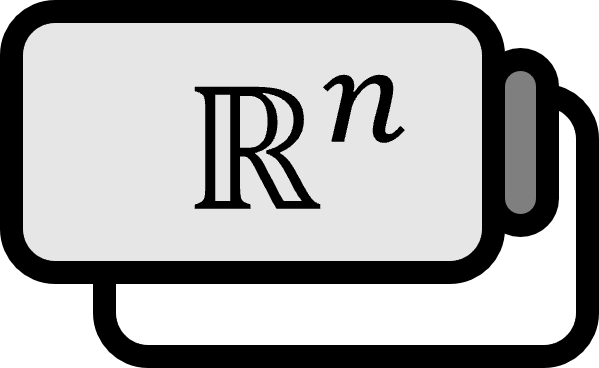Proof of the Pappus-Guldin Theorem
Theorem

Let the area of a shape $F$ on the plane be denoted as $A$, and let the volume of the solid of revolution $W$ obtained by rotating $F$ around axis $z$ be denoted as $V$. If the distance between the center of mass of $F$ and the axis $z$ is denoted as $r$, then $$ V = 2 \pi r A $$
Description
The Pappus-Guldin Theorem is often mentioned by teachers when learning about solids of revolution, even though it cannot be proved at the high school level. Surprisingly, even at the undergraduate level of mathematics where it can be proved, it is rarely needed.
Proof
Claim: Since the center of mass of $F$ is at $\displaystyle r = {{ \iint_{F} y dA } \over {A}}$, it suffices to show that $\displaystyle V = 2 \pi \iint_{F} y dA $.
Part 1.
If function $\Phi_{1} : F ' \to F$ is defined as $\Phi (u,v) = (0,y(u,v),z(u,v))$, then $\Phi_{1}$ becomes bijective. By using this to change coordinates, the Jacobian is $$ \left| \det \begin{bmatrix} \displaystyle {{\partial y } \over { \partial u }} & \displaystyle {{\partial y } \over { \partial v }} \\ \displaystyle {{\partial z } \over { \partial u }} & \displaystyle {{\partial z } \over { \partial v }} \end{bmatrix} \right| = \left| {{\partial y } \over { \partial u }} {{\partial z } \over { \partial v }} - {{\partial y } \over { \partial v }} {{\partial z } \over { \partial u }} \right| $$ Therefore, the area of $F$ is $$ A = \iint_{F} dA = \iint_{F ' } \left| {{\partial y } \over { \partial u }} {{\partial z } \over { \partial v }} - {{\partial y } \over { \partial v }} {{\partial z } \over { \partial u }} \right| du dv $$
Part 2.
Let’s denote $ W ' := F ' \times [0, 2 \pi ]$. If function $\Phi_{2} : W ' \to W$ is defined as $\Phi (u,v, \theta ) = (y(u,v) \cos \theta ,y(u,v) \sin \theta ,z(u,v))$, then $\Phi_{2}$ becomes bijective. By using this to change coordinates, the Jacobian is $$ \begin{align*} &\left| \det \begin{bmatrix} \displaystyle {{\partial y } \over { \partial u }} \cos \theta & \displaystyle {{\partial y } \over { \partial v }} \cos \theta & \displaystyle -y \sin \theta \\ \displaystyle {{\partial y } \over { \partial u }} \sin \theta & \displaystyle {{\partial y } \over { \partial v }} \sin \theta & \displaystyle y \cos \theta \\ \displaystyle {{\partial z } \over { \partial u }} & \displaystyle {{\partial z } \over { \partial v }} & 0 \end{bmatrix} \right| \\ =& \left| - {{\partial y } \over { \partial u }} {{\partial z } \over { \partial v }} y \cos^2 \theta + {{\partial y } \over { \partial v }} {{\partial z } \over { \partial u }} y \cos^2 \theta - \left( {{\partial y } \over { \partial u }} {{\partial z } \over { \partial v }} y \sin^2 \theta - {{\partial y } \over { \partial v }} {{\partial z } \over { \partial u }} y \sin^2 \theta \right) \right| \\ =& \left| {{\partial y } \over { \partial u }} {{\partial z } \over { \partial v }} y - {{\partial y } \over { \partial v }} {{\partial z } \over { \partial u }} y \right| \\ =& y \left| {{\partial y } \over { \partial u }} {{\partial z } \over { \partial v }} - {{\partial y } \over { \partial v }} {{\partial z } \over { \partial u }} \right| \end{align*} $$ The first equality is due to the Laplace expansion related to the third row. Therefore, the volume of $W$ is $$ V = \iiint_{W} dV = \iiint_{W '} y \left| {{\partial y } \over { \partial u }} {{\partial z } \over { \partial v }} - {{\partial y } \over { \partial v }} {{\partial z } \over { \partial u }} \right| du dv d \theta $$
Part 3.
Combining the results obtained above $$ \begin{align*} V =& \iiint_{W '} y \left| {{\partial y } \over { \partial u }} {{\partial z } \over { \partial v }} - {{\partial y } \over { \partial v }} {{\partial z } \over { \partial u }} \right| du dv d \theta \\ =& \int_{0}^{2 \pi } \iint_{F’} y \left| {{\partial y } \over { \partial u }} {{\partial z } \over { \partial v }} - {{\partial y } \over { \partial v }} {{\partial z } \over { \partial u }} \right| du dv d \theta \\ & = 2 \pi \iint_{F’} y \left| {{\partial y } \over { \partial u }} {{\partial z } \over { \partial v }} - {{\partial y } \over { \partial v }} {{\partial z } \over { \partial u }} \right| du dv \\ =& 2 \pi \iint_{F} y dA \end{align*} $$
■
